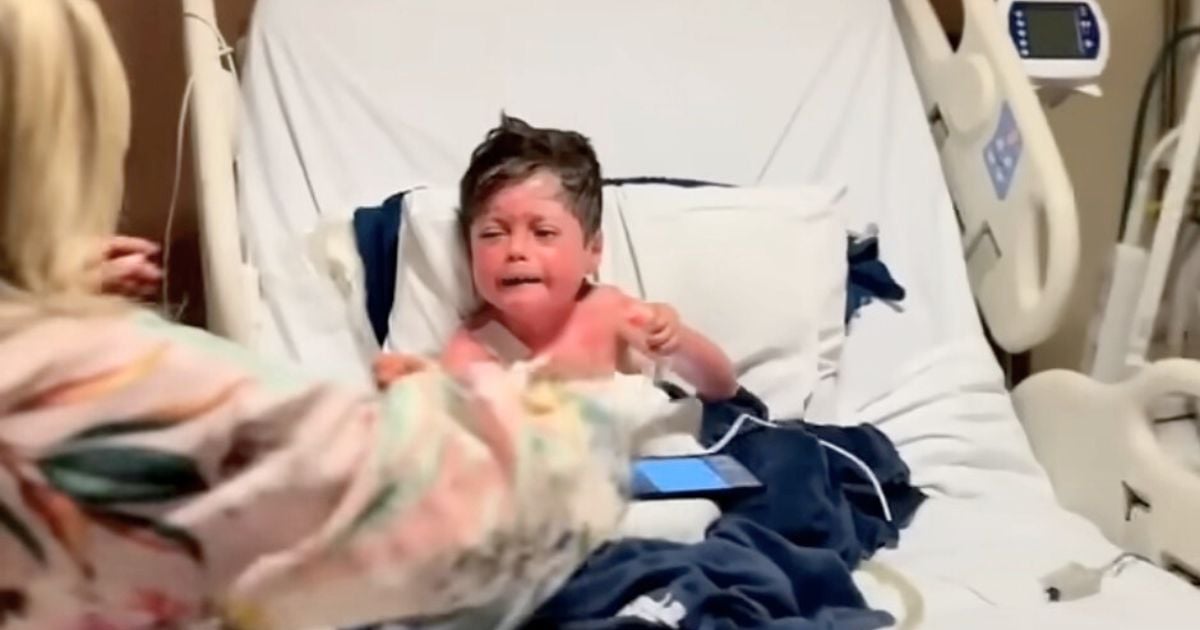There are some photos that are so jarring and touch your core so deeply that they make you completely re-think your actions. The photos you’re about to see are meant to do just that.
The Belted Survivors project out of New Zealand portrays shocking portraits of car crash survivors that show us the importance of wearing your seatbelt.
The initiative, set up by the New Zealand Transport Agency, aims to reduce the number of deaths that occur on New Zealand roads every year. The photos show brave men displaying staggering bruises from seatbelts–now worn as a badge of honor and survival.
According to the NZ Transport Agency, 90 people die each year because they weren’t wearing seatbelts. Many of these people happen to be young men in rural areas.
The portraits you’re about to see can be overwhelming to look at, so please proceed with caution.
These 10 incredible men below are real-life car crash survivors and their bruises and injuries were recreated using special effects makeup by the PROFX company.
Keep reading for their personal stories and more on this incredible campaign.
Dan Mason


Dan was just 21-years-old when he was wrapping up a late-night shift in Napier, New Zealand. He was struck by a drunk driver in a split-second crash that would change his life forever. He broke his jaw, a rib, and had 6 compound fractures. In addition to this, he also had brain damage to his frontal and temporal lobes. Paramedics at the scene had to perform an emergency tracheotomy on site.
It’s his seatbelt that saved his life.
Liam Bethell


Liam was just 200 meters from his home when he was T-boned by a truck. Nearly all of his ribs were broken along with three discs in his back and a horrific brain bleed that left him in a 10-day coma. He miraculously woke up the day before his daughter was born.
His seatbelt saved his life.
Will Giles


Will was hit from behind as he was sitting at an intersection. The force of the trauma rattled his brain, causing damage which meant he’d need to learn to talk and walk again.
His seatbelt saved his life.
James McDonald


Driving the path that James drove every single day, the bright sunlight obscured his vision for just a moment and it sent him into the path of an oncoming 18-wheeler. The crash left him with a broken arm and his nose was split in two–leaving his steering wheel broken from the impact of his face.
His seatbelt saved his life.
Dylan Chirnside


Just a couple miles from his home, Dylan was T-boned by another driver. He suffered a brain injury and broke one of the major bones that attach the head to the spine. It took over a year and a half to heal from his injuries.
His seatbelt saved his life.
Kahutia Foster


Kahutia rolled his car on a corner while driving home from a friend’s house. He flipped upside down and hit a tree before coming to a stop. His arm had been crushed under the weight of his car.
His seatbelt saved his life.
Rick Haira


Rick had just started a new apprenticeship and was on his way to the job site. As he was driving across train tracks, he didn’t see the oncoming train and was clipped–it sent him spinning out of control and into a transformer box.
His seatbelt saved his life.
Dion Perry


The roads were wet while Dion was driving in a rural area. His car started to slide, causing him to spin twice. Dion’s car landed in a ditch just short of a power pole. Although his car was totaled, he was left with only bruising.
His seatbelt saved his life.
Willy Carberry


Losing control, Willy ended up taking out 50 meters of fencing before hitting a power pole and flipping on its side.
His seatbelt saved his life.
James Liberona-Feek


Suffering through a head-on collision, James broke both of his legs, his right arm, and bruised several of his major organs. It took nearly eight months of rehabilitation to learn to walk again.
His seatbelt saved his life.
“A seatbelt really does leave a mark like this,” Dr. Natasha McKay, an emergency medical specialist who provided her expertise to the project, explained. “They will save your life, but they will leave you a mark to show how they’ve done it.”
These stunning photos are being displayed on billboards around New Zealand and Belted Survivors is encouraging others who survived crashes to tell their stories.
In addition to the photos, these brave and lucky men have also released videos sharing their stories. Take a look at a few below.
Liam’s story
Dylan’s story
Rick’s story
The NZTA worked closely with a marketing communications company called Clemenger BBDO for this campaign. Their goal is to change the way some men view seatbelts because their current view is that it’s simply an optional accessory rather than a life-saving necessity.
“We’re selling an undesirable product to these guys,” spokesperson Rachel Prince told Designboom. “Research told us they think seatbelt messages are for kids, for the elderly, for everyone else. We worked with them to make the undesirable something they wanted to buy.”
The campaign is catching the attention of people worldwide and the NZTA’s hope is that it helps people re-think driving without a seatbelt.
“It doesn’t matter how short the trip is. You never know who’s going to come out of the intersection and t-bone ya, or reverse out of a driveway, or an old lady going down the road, having a stroke,” said Willy Carberry, a participant in the project.
Please SHARE this with your friends and family.















